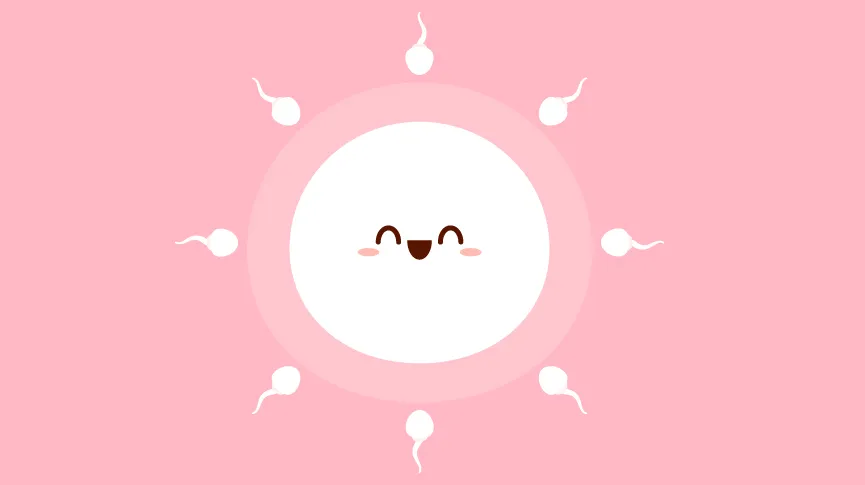
Don’t be fooled by the kissing ovaries’ sweet name. The condition is anything but kind, as it refers to a sign of moderate to severe deep pelvic endometriosis. Kissing ovaries are close in proximity, often touching or “kissing,” due to adhesions.
According to the New England Journal of Medicine, endometriosis impacts 10% of women of reproductive age, but that number may be higher due to misdiagnosis. Symptoms of endometriosis include severe pelvic pain, painful sex, painful periods, infertility, extreme bleeding, and fatigue. However, some women do remain asymptomatic while having the condition.
When a patient has endometriosis, the endometrium tissue—the uterine lining—is present outside the uterus. Endometriotic tissue, or lesions, can be found in the abdomen and pelvis region. Sometimes, endometriosis can spread and be found in other organs and areas of the body.
Lesions can vary in size, with some measuring millimeters and others the size of tennis balls.
Endometriosis is the leading cause of infertility and impacts 5 million people in the United States. Endometriosis tissue can wrap around your ovaries, the tissue can block sperm, and it can also stop an egg from being fertilized.
There are four types of endometriosis.
- The peritoneum is a thin membrane that lines the abdomen and pelvis, plus the organs located in these areas. Superficial peritoneal endometriosis is when endometrial tissue is attached to the peritoneum.
- In endometriomas, dark fluid-filled cysts appear in the pelvic region, most commonly in the ovaries.
- There is deeply infiltrating endometriosis which is when endometrial tissue attacks other organs in the pelvic area, like your ovaries, rectum, bladder, and bowels.
- Abdominal wall endometriosis is when endometrial tissue grows on the abdominal wall.
Moreover, there are four stages of endometriosis.
- Stage I is minimal, with a few endometriotic areas.
- Stage II has deep-end endometriotic areas.
- Stage III is moderate and includes deep and dense areas.
- Stage IV is severe endometriosis which includes all of the above plus areas in other organs.
Kissing ovaries typically occurs during the third and fourth stages.
What Causes Endometriosis?
The cause of endometriosis still stumps researchers and doctors. Experts hypothesize that genes may contribute to the condition, while others claim it is linked to an immune system disorder.
Risk factors that can raise the risk of the condition include having a family member with endometriosis, having a low Body Mass Index (BMI), having short menstrual cycles, having heavy periods for more than a week, never giving birth, and having high estrogen levels.
Testing for Endometriosis and Kissing Ovaries
Although kissing ovaries are a sign of endometriosis, they can also—although less likely—be a symptom of pelvic inflammatory disease (PID), which can increase your risk of ectopic pregnancy and infertility if left untreated.
PID symptoms include pain in the pelvis, discomfort during sex, pain when peeing, bleeding between periods and after sex, painful periods, and unusual vaginal discharge. After being diagnosed with PID, it can be treated with antibiotics, so visit your doctor if you have any of these symptoms.
Endometriosis can be diagnosed through an MRI, a blood and urine test, or a laparoscopy, which is the best way to confirm the condition. By making two small incisions in the pelvic area, a doctor will insert a laparoscope with a small camera on the end to see any endometrial tissue.
From there, the doctor will evaluate the tissue and take a biopsy. Endometriosis has a low diagnosis rate, with the average being a staggering seven to nine years until a woman gets an official diagnosis.
Testing for kissing ovaries can’t be discovered outside the body and will require a noninvasive procedure. A doctor will conduct a pelvic ultrasound to look for the cause of the pelvic pain, and they will see that the ovaries are enlarged—AKA “kissing.” CT scans and MRIs can also be used to examine the ovaries.
Kissing ovaries have been found to be linked to more severe endometriosis symptoms and infertility.
Treatment for Kissing Ovaries
Treatment for kissing ovaries involves treatment for endometriosis as a whole.
Hormonal therapy or pain medication helps with some stages of endometriosis. For some women, nonsteroidal anti-inflammatory drugs, hormonal birth control, medication for lowering estrogen levels, muscle relaxers, or antidepressants are prescribed for treatment.
Some women even consider Botox, muscle injections, physical therapy, and behavioral therapy for managing stress.
If you’re diagnosed with kissing ovaries, you probably have later stages of endometriosis. You will need to seek a specialist who treats endometriosis and consider surgery to get your ovaries unstuck. The surgery will remove the extra tissue; however, your healthcare provider will consider which option is best for your situation.
Laparoscopic surgery is considered the gold standard for treating the condition, which will work towards clearing the disease for recurrence.
After surgery, patients will go on post-surgical medication to prevent endometriosis from returning. The medication is typically long-term oral contraceptives.
Overall, living with endometriosis is no easy feat. And with so many little answers, women can become isolated in their pain. Talking to your peers, partner, and most importantly, your doctor can ensure that you’re on your way to recovery and towards a pain-free life.
Source link

